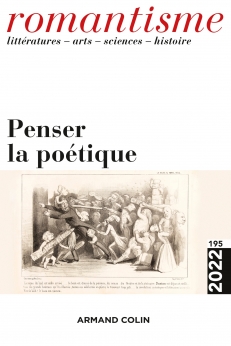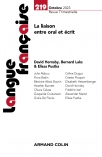
ROMANTISME N°195 (1/2022)
Pour acheter ce numéro, contactez-nous
Recevez les numéros de l'année en cours et accédez à l'intégralité des articles en ligne.
À la fin de sa vie, Stéphane Mallarmé se consacre tout entier à la réalisation d’un « Livre » qui devait être son GrandOEuvre, à la fois littéraire et mystique. Habité du fantasme du livre-monde, le Poète aspire à la création d’un ouvrage capable d’être tous les livres à la fois. En vain : sa mort parachèvera l’inaccomplissement de ce projet. En 1957, Jacques Scherer publie pour la première fois les notes en vue du « Livre ». La dimension cosmologique de cette utopie esthétique inspire alors la théorie littéraire des années 1960-1970, et le « Livre » devient peu à peu un prototype cybernétique, un « paléo-ordinateur ». Cet article se propose de revenir sur ce moment cybernétique du « Livre » de Mallarmé afin de mieux cerner la manière dont il a été un jalon historique du tournant matériel de la littérature, et des bouleversements que ce dernier a induits quant à la poétique des textes.
At the end of his life, Stéphane Mallarmé concentrated on the creation of a “Livre” – “Book”— that was to be his Master-Piece, both literary and mystical. Haunted by the phantasm of the world-book, the Poet aspires to create a book that can be all books at a time. In vain: his death will simply finalise the project’s incompleteness. In 1957, Jacques Scherer published the first edition of Mallarmé’s notes towards the “Livre”. The cosmological dimension of this aesthetic utopia was then to inspire the literary theory of the 60s and 70s, and the “Livre” little by little became a cybernetic prototype, a « paleo-computer ». This paper aims at reanalysing the “Livre”’s cybernetic moment in order to better understand the way it became a historic moment in the turn towards the materiality of literature, and in the upheavals this has wrought in textual poetics.

